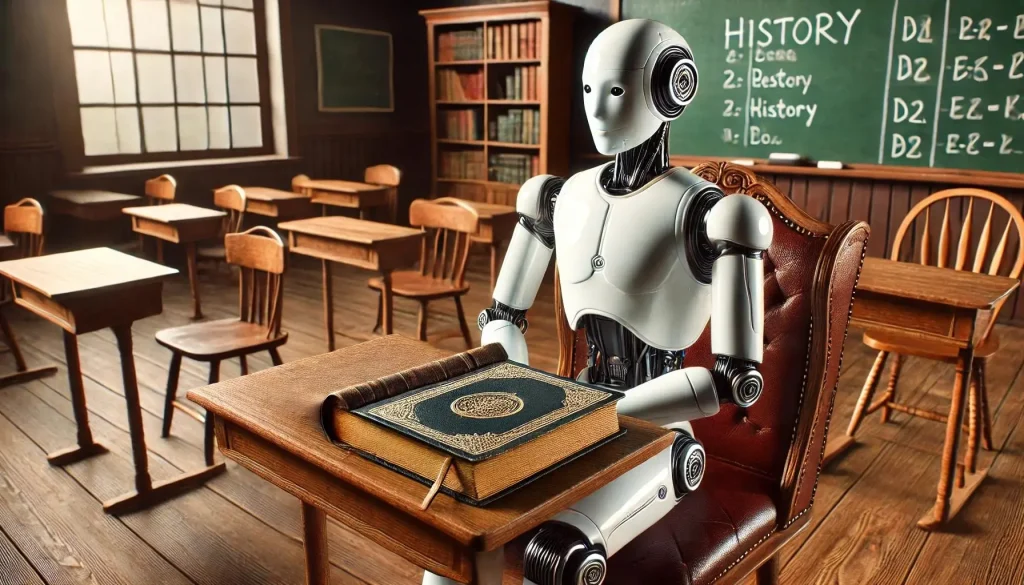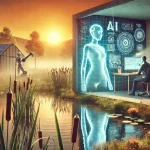
AI History
Introduction
Humanity has always been captivated by the idea of creating intelligent beings, a fascination reflected in myths and legends from ancient cultures. In Greek mythology, Talos, a giant bronze automaton, was said to protect the island of Crete. In Jewish folklore, the Golem, a creature formed from clay, was imbued with life to serve and protect. These stories reveal an enduring desire to build entities capable of mimicking human thought and action, showcasing an intrinsic connection between creativity and the dream of artificial intelligence (AI).
The transition from myth to science began with philosophical musings about human cognition. Over time, these musings laid the foundation for the technical and computational achievements that define AI today. The parallels between the imagined and the real highlight a deep-seated human aspiration: to extend our abilities through the creation of intelligent tools.
This essay will explore the history of AI, tracing its evolution from ancient myths to modern technological marvels. It will cover the philosophical origins, key milestones, periods of stagnation, and the resurgence of AI in the 21st century. By examining this journey, we will better understand AI’s role in shaping the future.
Ultimately, the history of AI is a story of persistence. Despite challenges and setbacks, researchers and innovators have continuously worked toward building systems that think and act intelligently, reflecting both our ingenuity and our ambition to create something greater than ourselves.
The Foundations of Artificial Intelligence
A. Myth and Legend
The earliest conceptions of AI were rooted in mythology, where tales of mechanical beings served humanity’s needs. Talos, a bronze guardian, was described as nearly indestructible, programmed to patrol and protect with a single directive. Similarly, the Jewish Golem, animated by sacred inscriptions, symbolized the interplay between creation and control. These stories offered a blueprint for the challenges of programming intelligence: defining rules, ensuring loyalty, and balancing power with responsibility.
These legends reveal humanity’s long-standing fascination with the concept of automation and intelligence. They also highlight moral questions that persist today, such as whether creators have the right to imbue their creations with autonomy. Such myths were not just fanciful stories but allegories for human ambition and the ethical dilemmas surrounding creation.
B. Philosophical Roots
Philosophers such as René Descartes pondered the nature of human thought, suggesting it could be replicated in a mechanical form. Descartes’ famous assertion, “I think, therefore I am,” hinted at the idea of cognition as a replicable process. Philosophers questioned whether thinking required a soul or could arise purely from mechanical systems.
The leap from philosophy to science came with the development of formal logic, a field championed by figures like Aristotle and later by George Boole. Boolean algebra and symbolic logic offered the first tools to model reasoning mathematically, forming a foundation for AI. This intellectual groundwork set the stage for the technical advancements that followed, transforming abstract ideas into practical systems.
The Dawn of Modern AI
A. The Role of Alan Turing
The modern study of AI began with Alan Turing, whose groundbreaking work during World War II laid the groundwork for computational theory. Turing’s development of the Turing Machine introduced a conceptual framework for processing information and performing calculations. His 1950 paper, “Computing Machinery and Intelligence,” posed the now-famous question: “Can machines think?”
Turing’s proposed Turing Test remains a seminal benchmark for evaluating machine intelligence. If a computer can convince a human of its sentience during a conversation, it is said to have passed the test. This idea was revolutionary, reframing intelligence as behavior rather than an abstract essence, setting AI research on a practical path.
B. The Dartmouth Conference (1956)
The Dartmouth Conference marked the birth of AI as a formal academic discipline. Researchers such as John McCarthy, Marvin Minsky, and Claude Shannon gathered to explore whether machines could “simulate any aspect of human learning or intelligence.” It was here that the term “artificial intelligence” was first coined.
The conference set ambitious goals, predicting that human-level intelligence could be achieved within a decade. Though overly optimistic, it spurred early developments in AI, including the creation of programs capable of playing chess and solving basic algebraic equations. These achievements, while limited, demonstrated the potential of AI and attracted funding and interest.
C. Early AI Programs
Early programs like the Logic Theorist (1956) showcased the ability of machines to perform tasks requiring logical reasoning. These systems were designed to mimic human thought processes, solving problems by breaking them into smaller, manageable components.
While groundbreaking, these programs also revealed the limitations of early AI. They relied heavily on pre-programmed rules and struggled with tasks requiring flexibility or creativity. Nonetheless, they established a foundation for future advancements, proving that machines could process logic and “think” in structured ways.
The Cycles of Hype and Disappointment
A. The Golden Age of AI
The 1960s and 70s were a period of optimism for AI, with researchers developing systems capable of diagnosing medical conditions and solving mathematical proofs. Expert systems, such as MYCIN, were able to outperform human specialists in narrow domains, demonstrating the power of rule-based reasoning.
However, this success was largely confined to well-defined problems. Systems struggled with the messy, unpredictable nature of real-world applications, limiting their broader utility. Despite this, the era produced significant theoretical advancements, including research into neural networks and natural language processing.
B. The AI Winters
Expectations for AI were unrealistically high, leading to disillusionment when progress stagnated. Funding agencies and governments reduced support, ushering in “AI winters.” These periods were marked by reduced interest and stalled progress, as researchers struggled with the limitations of hardware and algorithmic design.
The first AI winter (1974–1980) occurred after programs failed to deliver on promises of human-level intelligence. A second winter in the late 1980s was triggered by the collapse of the expert systems market. These downturns forced researchers to reevaluate their approaches, leading to a focus on more achievable goals.
The Resurgence of Artificial Intelligence
A. Key Drivers of Modern AI
The resurgence of AI in the 21st century was fueled by advancements in hardware, particularly GPUs, which made complex computations faster and more affordable. Machine learning algorithms, particularly deep learning, enabled systems to process vast amounts of data with remarkable accuracy.
The availability of big data was another critical factor. With billions of data points generated daily, AI systems could now be trained on real-world information, enhancing their accuracy and versatility. This created opportunities for AI to enter domains previously considered too complex.
B. Breakthrough Technologies
Modern AI systems are capable of tasks once thought impossible, such as understanding natural language and identifying objects in images. Programs like OpenAI’s ChatGPT and Google’s BERT have revolutionized natural language processing, enabling nuanced conversations and document summarization.
In fields like healthcare, AI now powers diagnostic tools capable of detecting diseases with greater precision than human doctors. Autonomous systems, such as self-driving cars, are poised to transform transportation, reducing accidents and optimizing traffic flow.
Applications and Impacts of Contemporary AI
A. Everyday Applications
AI has become an integral part of daily life, from virtual assistants like Siri and Alexa to recommendation algorithms on Netflix and Amazon. These systems simplify tasks, enhance convenience, and personalize user experiences, demonstrating the practical benefits of AI.
B. Industry Transformations
In healthcare, AI assists in drug discovery, patient care, and diagnostics. Financial institutions use AI to detect fraud and predict market trends. Logistics companies rely on AI to optimize supply chains, reduce costs, and improve delivery times. Each application highlights AI’s transformative potential across sectors.
C. Ethical and Societal Considerations
As AI advances, it raises ethical concerns, including bias in decision-making, job displacement, and privacy invasion. Regulators and researchers must address these issues to ensure AI benefits society equitably. Ethical frameworks will be crucial in balancing innovation with responsibility.
Conclusion
The journey of AI from ancient myths to modern marvels underscores humanity’s ingenuity and ambition. While progress has been marked by periods of optimism and setbacks, the field continues to advance, shaping industries and daily life.
Looking forward, AI holds the potential to surpass human capabilities in certain domains, offering unprecedented opportunities and challenges. Thoughtful integration and robust ethical frameworks will be essential to harness AI’s power for the greater good.
By reflecting on the past and preparing for the future, we can ensure AI remains a tool for human advancement, rather than a source of division or harm.


